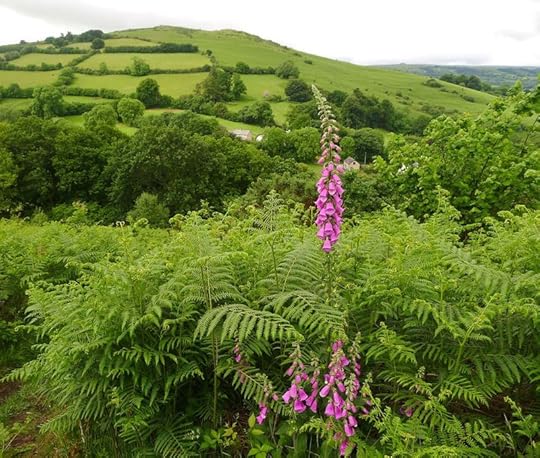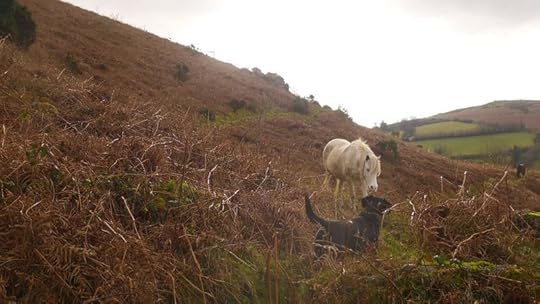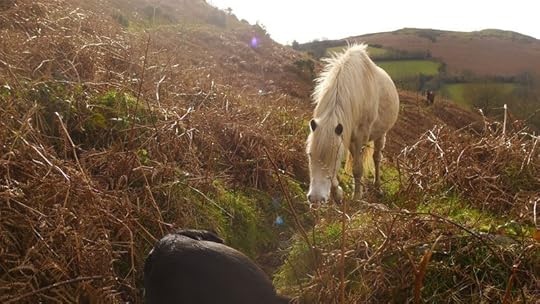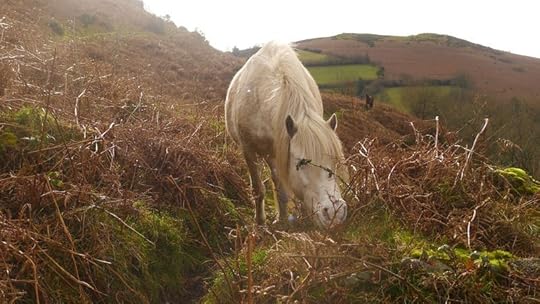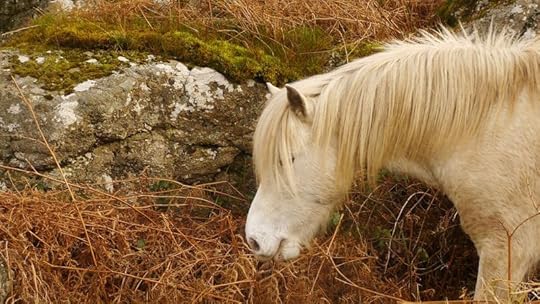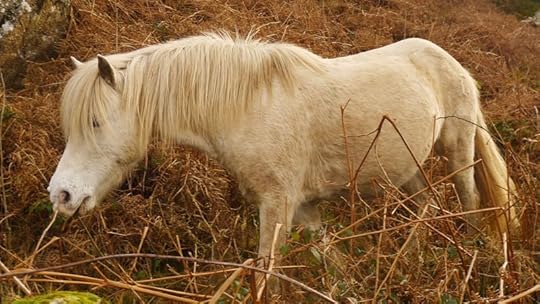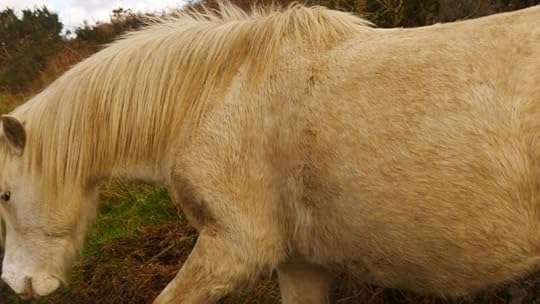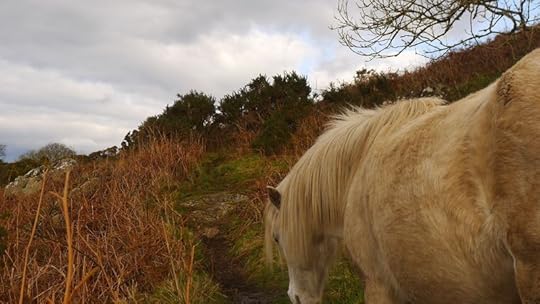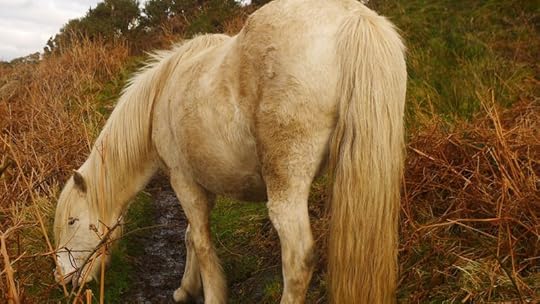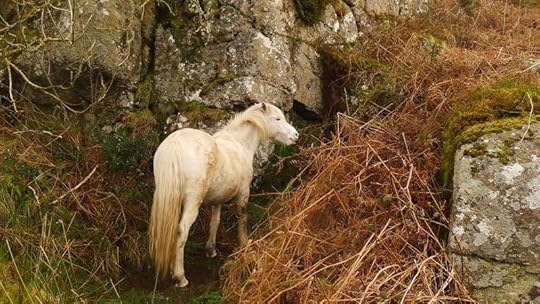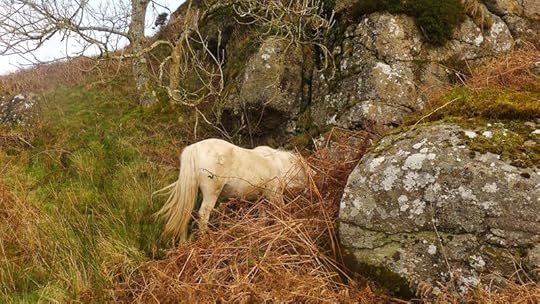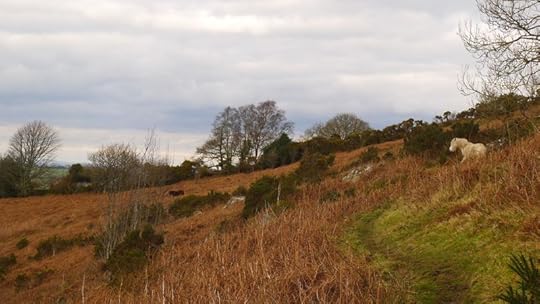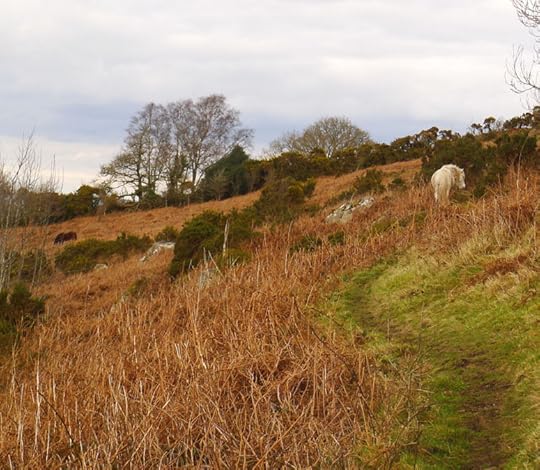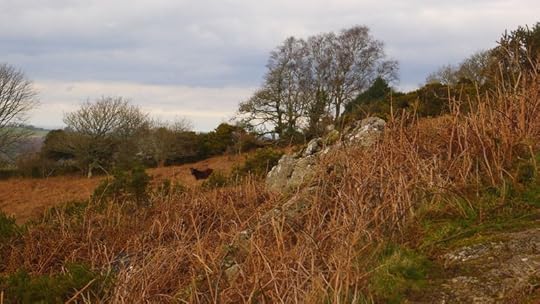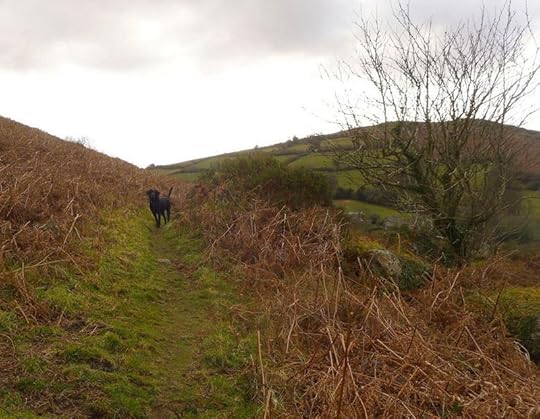Terri Windling's Blog, page 113
June 26, 2016
Tunes for a Monday Morning
Today, something breath-takingly beautiful:
In the video above, Italian pianist and composer Ludovico Einaudi performs "Elegy for the Arctic" on a platform floating in the middle of the Arctic Ocean, in support of the Greenpeace campaign for the region. Greenpeace has urged the OSPAR Commission not to miss the opportunity to protect international Arctic waters under its mandate at their meeting this month in Tenerife. In this piece, Einaudi has turned into music the voices of the eight million people asking for Arctic protection, accompanied by the sound of birds, wind, waves, and the crashing of icebergs.
"Being here has been a great experience,��� says Einaudi. ���I can see the purity and fragility of this area with my own eyes and interpret a song I wrote to be played upon the best stage in the world. It is important that we understand the importance of the Arctic, stop the process of destruction and protect it." More information on the Save the Arctic initiative can be found here.
Below: In the first short video, the director and musicians of the Seattle Symphony discuss "Become Ocean" by American composer John Luther Adams. In the second video, you can hear the piece itself. Adams, based in Alaska, often find his inspiration in the natural world. "Life of earth first emerged from the sea," he says. "And as the polar ice melts and sea level rises, we humans find ourself facing the prospect that, once again, we might literally become ocean."
"My composing is all to do with finding a way of being in the world that���s not separate from the world." - John Luther Adams
And to end with:
"Only the Wind" by ��lafur Arnalds, a composer of neoclassical electronica from Mosfellsb��r, Iceland. The piece is from his beautiful third album, For Now I am Winter (2013).
"How do people imagine the landscapes they find themselves in?" Barry Lopez mused in his classic book Arctic Dreams. "How does the land shape the imaginations of the people who dwell in it? How does desire itself, the desire to comprehend, shape knowledge?''
These are all good questions to ask. I turn to art to find the answers.
June 22, 2016
On the eve of the EU Referendum
The EU Referendum is tomorrow, and I'm terribly worried about the outcome. Tilly & I want to stay IN the European community of writers, artists & scholars. Don't shut us out! We support Remain.
Since this is pet-loving Britain, there is of course a Mutts4Remain hashtag...and the wonderful goofiness of it is one of the many reasons I love my adopted country. (There are CatsAgainstBrexit too.) I don't want it to turn into anti-Europe, anti-immigrant Fortress Britain. Building walls out of fear is a terrible idea, whether it's Trump in America or Johnson, Gove, and Farage over here.
I am an immigrant. And like so many immigrants, I give to the UK much, much more than I've ever taken.
June 21, 2016
And off they go....

The second Widdershins Exhibition opens this weekend (the first one was back in 2013), so it's been a busy month in the studio finishing up the six pieces I'm contributing to it.
I've been focusing on drawing and collage-making lately -- putting paints aside for a little while in order to follow an intriguing new path: combining small sketches of my bunny-earred, bird-tailed Little People with the hand-stitched assemblage work of collage.

Six framed collages left my studio this morning. I always feel a bit sad to see them go, as though the Little People really are little children who must now make their own way in the world....
But in fact, three of them are well-travelled already, having had their debut at The Fernie Brae gallery in Portland, Oregon. They have spanking new clothes for their next adventure, however, for each has been altered and enlarged so that they'll make a matched set with the three new additions. Now all six are at Green Hill Arts in Moretonhampstead, where I hope they'll play nicely with the other mythic artworks in the gallery.
Come see them if you can. The exhibition starts Saturday, and runs all summer. (More info here.)
Below are details from each of the six pieces. I'll post full copies of the art here soon, but not just yet. Right now they belong to Widdershins, and should be seen first in the show.
June 20, 2016
Myth & Moor update
Still hustling to meet my deadlines, but here's a bit of Tilly loveliness in the meantime, on the brow of the hill behind our house. I'll be back tomorrow, or Wednesday at the latest.
''All we have, it seems to me, is the beauty of art and nature and life, and the love which that beauty inspires.'' - Edward Abbey (The Journey Home)
June 17, 2016
Foxgloves at Bumblehill
Like many, I am feeling battered by the daily headlines, and so I'm taking a few days off the internet to ground myself, and to meet some rather importants deadlines that sailed right passed me while other parts of my life required attention. I'll be back on Monday or Tuesday, once the last of these overdue commitments have been honorably discharged.
Be kind to yourself in the meantime. Between the shootings in Florida, and the shooting of MP and social justice activist Jo Cox over here, it's been a very, very rough week for everyone, and for the LGBT and feminist community in particular.
"I feel that art has something to do with the achievement of stillness in the midst of chaos," Saul Bellow once wrote. "A stillness which characterizes prayer, too, and the eye of the storm. I think that art has something to do with an arrest of attention in the midst of distraction."
I wish you stillness.
 Foxgove beside The Little Cabin by the Woods (Howard's studio).
Foxgove beside The Little Cabin by the Woods (Howard's studio).
June 15, 2016
Foxgloves on Nattadon Hill
For last year's post on the folklore of foxgloves, go here. For the folklore of foxes, go here. The charming fox paintings are by American artist Julianna Swaney. The foxy photograph is by UK wildlife photographer Richard Bowler.
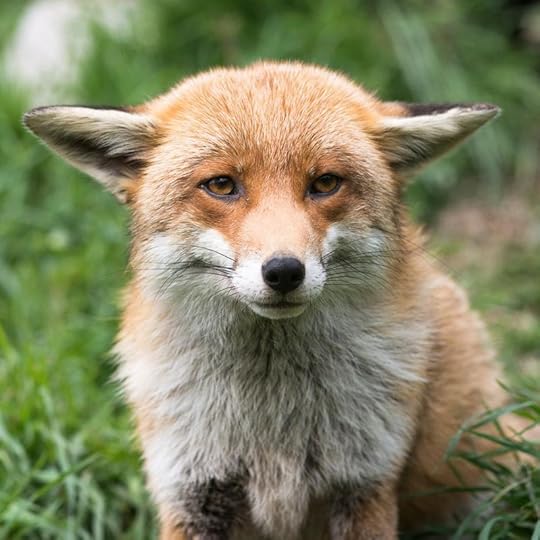 The poem in the picture captions is from The Red Wheelbarrow 4 (2000). All rights reserved by the author and artists.
The poem in the picture captions is from The Red Wheelbarrow 4 (2000). All rights reserved by the author and artists.
June 14, 2016
Working with words
"Where words and place come together, there is the sacred," writes Kiowa poet and novelist N. Scott Momaday. "The question 'Where are you going?' is so commonplace in so many languages that it has the status of a universal greeting; it is formulaic. There is an American folksong that begins:
Well, where do you come from, and where do you go?
Well, where do you come from my cotton-eye Joe?
"The questions are so familiar that they are taken for granted. But their implications, their consequent meanings, are profound. In the deepest matter of these words are the riddles of origin and destiny, and by extension the stuff of story and ritual. I belong in the place of my departure, says Odysseus, and I belong in the place that is my destination. Only in this spectrum is the quest truly possible. The sense of place and the sense of belonging are bonded fast by the imagination. And words, in all their formal and informal manifestations, are the best expression of the imagination.
"Linguists have long suggested that we are determined by our native language, that language defines and confines us. It may be so. The definition and confinement do not concern me beyond a certain point, for I believe that language in general is practically without limits.
"We are not in danger of exceeding the boundaries of language," he says, "nor are we prisoners of language in any dire way. I am much more concerned with my place within the context of my language. This, I think, must be a principle of storytelling. And the storyteller's place within the context of his language must include both a geographical and mythic frame of reference. Within that frame of reference is the freedom of infinite possibility. The place of infinite possibility is where the storyteller belongs."
In an earlier interview, Momaday stated: "Words are intrinsically powerful. And there is magic in that. Words come from nothing into being. They are created in the imagination and given life on the human voice. You know, we used to believe -- and I am talking about all of us, regardless of our ethnic backgrounds -- in the magic of words. The Anglo-Saxon who uttered spells over his field so that the seeds would come out of the ground on the sheer strength of his voice, knew a good deal about language, and he believed absolutely in the efficacy of language.
"That man's faith -- and may I say, wisdom -- has been lost upon modern man, by and large. It survives in the poets of the world, I suppose, the singers. We do not now know what we can do with words. But as long as there are those among us who try to find out, literature will be secure; literature will be a thing worthy of our highest level of human being."
Like Momaday, I believe that words have a magic and a power of their own, which those of us working in mythic arts and the fantasy field would be wise to remember. A good fantasy novel is literally spell-binding, using language to conjure up whole new worlds, or to invest our own with magic. The particular power of fantasy comes from its link with the world's most ancient stories, and from the author's careful manipulation of mythic archetypes, story patterns, and symbols.
A skillful writer knows that he or she must tell two stories at once: the surface tale, and a deeper story encoded within the tale's symbolic language. The magical tropes of fantasy, rooted as they are in world mythology, come freighted with meaning on a metaphoric level. A responsible writer works with these symbols consciously and pays attention to both aspects of the story.
In her fine book Touch Magic, Jane Yolen writes: "Just as a child is born with a literal hole in his head, where the bones slowly close underneath the fragile shield of skin, so the child is born with a figurative hole in his heart. What slips in before it anneals shapes the man or woman into which that child will grow. Story is one of the most serious intruders into the heart."
I believe that those of us who use the magic of words professionally should remember how powerful stories can be -- for children especially, but also for adults -- and take responsibility for the tenor of whatever dreams or nightmares we're letting loose into the world. This is particularly true in fantasy, where the tools of our trade include the language, symbolism and archetypal energies of myth. These are ancient, subtle, potent things, and they work in mysterious ways.
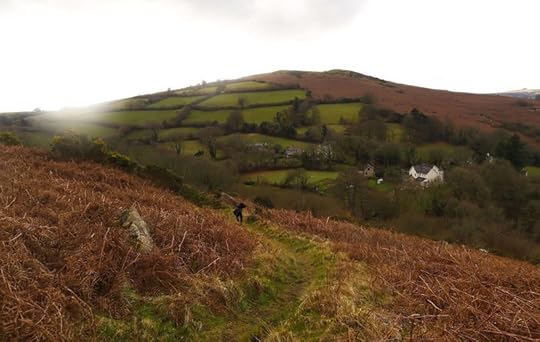 Words: The first passage by N. Scott Momaday is from The Man Made of Words: Essays, Stories, Passages (St. Martin's Press, 1997); the second passage is from Survival This Way: Interviews with American Indian Poets by Joseph Bruchac (Sun Tracks/U of Arizona Press, 1987). The poem in the picture captions is from Momaday's In the Presence of the Sun: Stories and Poems, 1961-1991 (St. Martin's Press, 1991). All rights reserved by Momaday and Bruchac.
Words: The first passage by N. Scott Momaday is from The Man Made of Words: Essays, Stories, Passages (St. Martin's Press, 1997); the second passage is from Survival This Way: Interviews with American Indian Poets by Joseph Bruchac (Sun Tracks/U of Arizona Press, 1987). The poem in the picture captions is from Momaday's In the Presence of the Sun: Stories and Poems, 1961-1991 (St. Martin's Press, 1991). All rights reserved by Momaday and Bruchac.
Pictures: These photos come from a pony encounter on our hill at the end of February, before the health crisis that confined me to bed in early spring -- I've only just remembered them, which is why I am posting them now. Tilly is very good with these free-roaming Dartmoor ponies; she knows not to hassle or startle them...though sometimes they startle her.
Word magic: Go here for previous posts on the subject by Ben Okri, Jeanette Winterson, Jane Yolen and others; and here for a short article by John Kelly on the rat-slaying poetry of the Irish bards.
Bumblehill's resident clown
I was feeling a little low in spirit this morning, the headlines continuing to get me down, but then I turned around and saw this. Every studio needs a clown.
Words, paint, and the power to keep going
This has been a deeply unsettling week, a time of change and transition in our family life, while the horrors of the headlines throw shadows over all, even here on a hillside in Devon.
As artists, when we step through the studio door we must leave the world and its worries behind in order to center ourselves in our work...but what do we do during times like these when trouble clings to our skirt like burrs and each day's news is a song of despair? When the shadows loom large, and the work of words and paint seems small, even trivial, in their presence? How to we free ourselves from the numbing paralysis of cultural despair, and find the spark of vitality, creativity, and hope that will keep us going?
As always, I turn for guidance to those who have walked such paths before -- if not this path precisely, then parallel paths through the dark of the woods. And sometimes what they offer is not a map that leads quickly and easily out, but a deeper understanding of the woodland itself.
"By honoring our despair," writes ecologist Joanna Macy, "and not trying to suppress it or pave over it as some personal pathology, we open a gateway into our full vitality and to our connection with all of life. Beneath what I call our 'pain for the world,' which includes sorrow and outrage and dread, is the instinct for the preservation of life. When we are unafraid of the suffering of our world, and brave enough to sustain the gaze and speak out, there is a redemptive sanity at work.
"The other side of that pain for our world is a love for our world. That love is bigger than you would ever guess from what our consumer society conditions us to want. It's a love so raw, so ancient, so deep that if you get in touch with it, you can just ride it; you can just be there and it doesn't matter. Then nothing can stop you. But to get to that, you have to stop being afraid of hurting. The price of reaching that is tears and outrage, because the tears and the power to keep on going, they come from the same source."
The transformation of despair into hope is alchemical work, creative work. And what all transformations have in common, writes Rebecca Solnit, is that they begin in the imagination.
"To hope is to gamble," she says. "It's to bet on the future, on your desires, on the possibility that an open heart and uncertainty are better than gloom and safety. To hope is dangerous, and yet it is the opposite of fear, for to live is to risk. I say all this to you because hope is not like a lottery ticket you can sit on the sofa and clutch, feeling lucky. I say this because hope is an ax you break down doors with in an emergency; because hope should shove you out the door, because it will take everything you have to steer the future away from endless war, from annihilation of the earth's treasures and the grinding down of the poor and marginal. Hope just means another world might be possible, not promised, not guaranteed. Hope calls for action; action is impossible without hope."
Words and paints are small things indeed compared to the shadows that gather around us. But they are what I have, and what I will use. Once again, I choose hope.
And the obligation to act that comes with it.
 The Joanna Macy quote above is from "Women Reimagining the World" (in Moonrise, edited by Nina Simons, 2010); the Rebecca Solnit quote is from her book Hope in the Dark (2004). The poem in the picture captions is an excerpt from "What the Light Teaches" by Anne Michaels, published in her collection Poems (Bloomsbury, 2000); I highly recommend reading it in full. All rights reserved by the authors.
The Joanna Macy quote above is from "Women Reimagining the World" (in Moonrise, edited by Nina Simons, 2010); the Rebecca Solnit quote is from her book Hope in the Dark (2004). The poem in the picture captions is an excerpt from "What the Light Teaches" by Anne Michaels, published in her collection Poems (Bloomsbury, 2000); I highly recommend reading it in full. All rights reserved by the authors.
June 13, 2016
Tunes for a Monday Morning
Today, I just want to be reminded that the world holds light and beauty as well as darkness...
Above: "Fantasia on a Theme by Thomas Tallis" by English composer Ralph Vaughan Williams (1872-1958), performed by the BBC Symphony Orchestra, conducted by Andrew Davis, in Gloucester Cathedral in 2012. This is the same cathedral where the piece debuted in 1910, in a performance conducted by Vaughn Williams himself.
Below: "Cantus in Memoriam Benjamin Britten," by the great Estonian composer Arvo P��rt. It's performed here by the Radio Filharmonisch Orkest in Hilversum, the Netherlands. The conductor is James Gaffigan.
Above: "Dream in White on White" by the Pulitzer-Prize-winning American composer John Luther Adams, who is based in Alaska. Most of Adams' work is inspired by nature and this piece is no exception, described as "a sweeping musical landscape in the acoustically perfect tones of Pythagorean diatonic tuning, evoking the treeless, windswept expanses of western Alaska." It's performed here by the Virtuoso String Orchestra, conducted by Joaquin Valdepe��as.
Below: "Further Foundation," by American composer Rachel Grimes, who is based in Kentucky. The piece is on her gorgeous new album, The Clearing (2015), performed here by Grimes on piano, Scott Moore on violin, Christian Frederickson on viola, and John Duncan on Saxophone.
Terri Windling's Blog
- Terri Windling's profile
- 708 followers
























